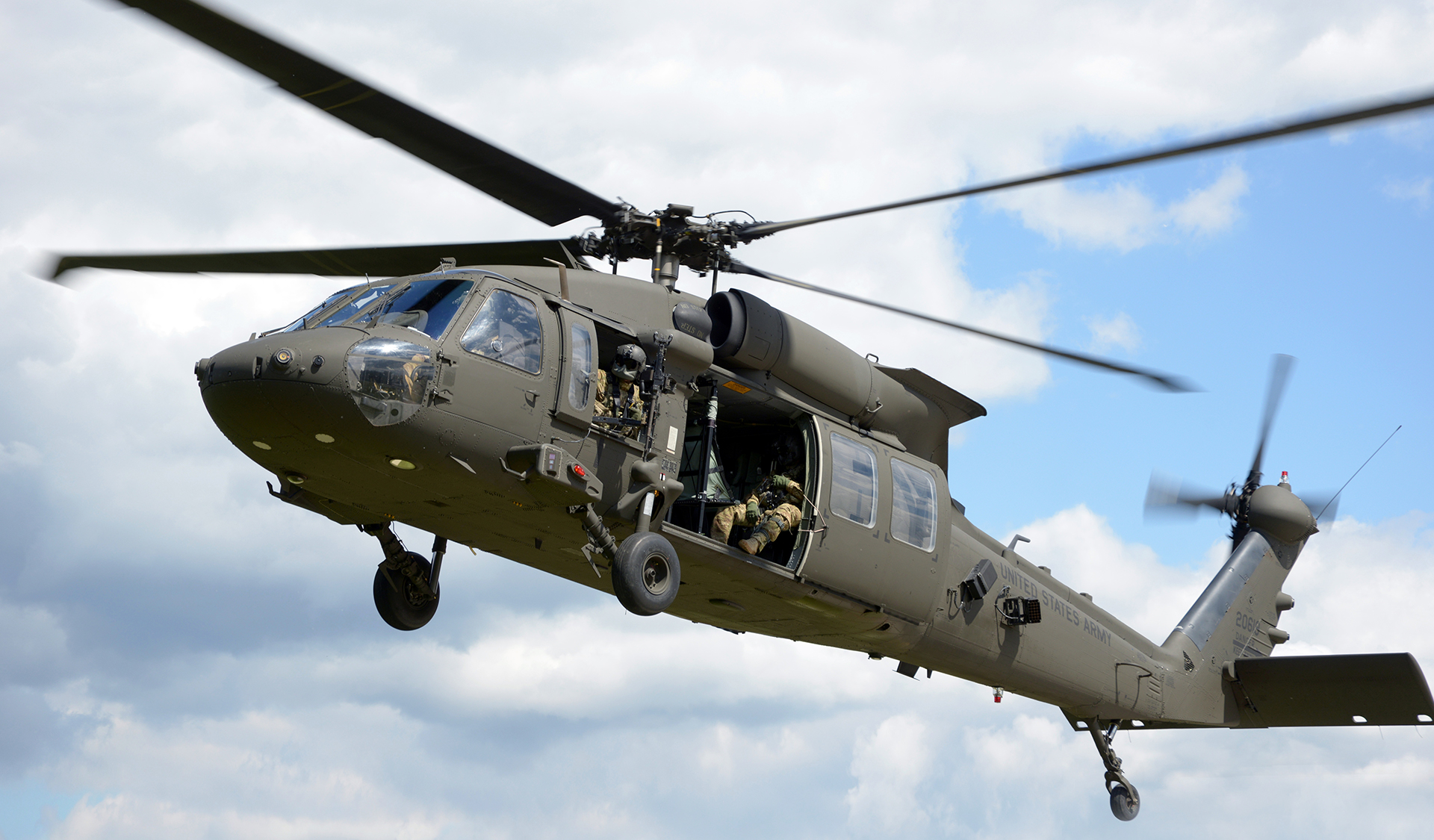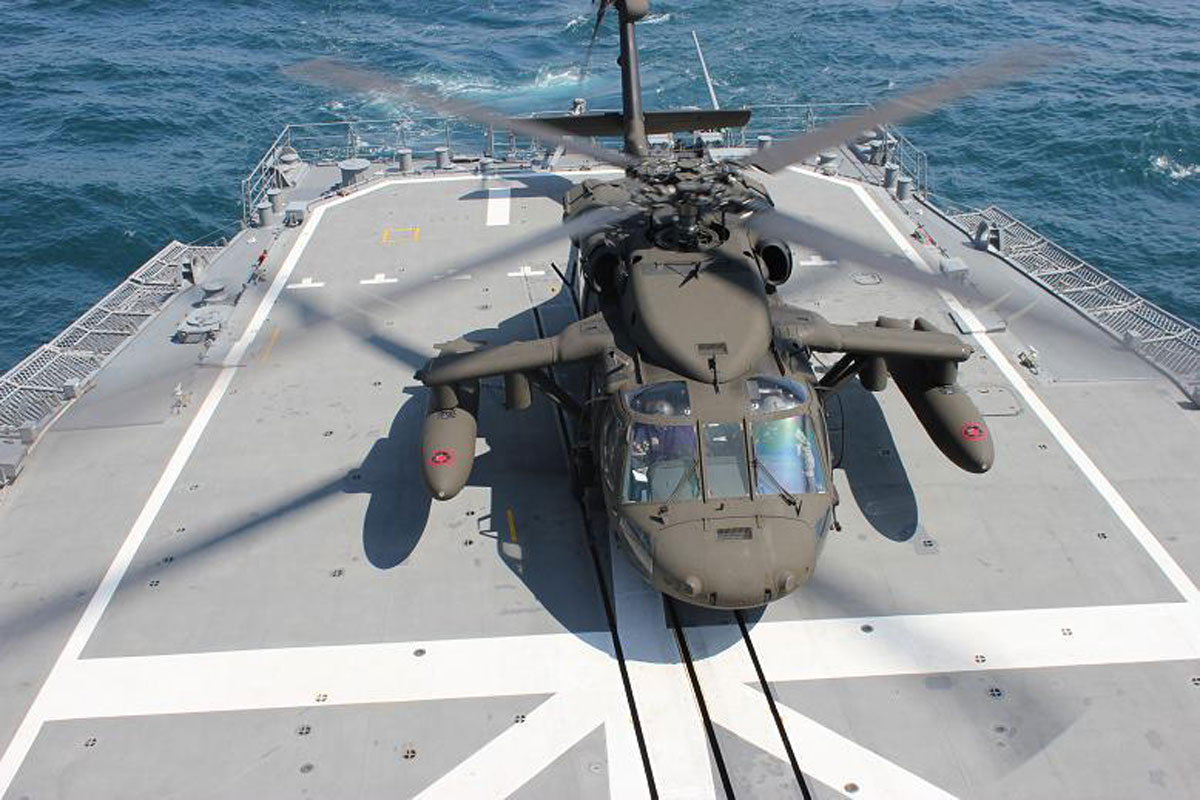A Comprehensive Guide to the UH 60's Features and Performance Metrics
A Comprehensive Guide to the UH 60's Features and Performance Metrics
Blog Article
UH-60: Developments in Modern Helicopter Layout
The UH-60 helicopter stands as a standard in modern-day air travel, showcasing considerable developments in layout and modern technology that cater to the evolving demands of army operations. As we check out the development and crucial technologies of the UH-60, it becomes vital to take into consideration how these advancements affect not only existing applications but also the future landscape of helicopter style.

Development of the UH-60
The advancement of the UH-60 Black Hawk helicopter stands for a substantial turning point in aerospace design and army aviation. Presented in the late 1970s, the UH-60 was made by Sikorsky Aircraft to meet the USA Army's demand for a flexible energy helicopter efficient in doing a range of missions. Its style stressed toughness, maneuverability, and speed, establishing brand-new standards for operational performance.
The UH-60 features an unique four-blade rotor system, which improves lift and security, permitting it to operate successfully in varied environments. Its airframe is constructed from sophisticated composite materials, adding to a reduction in weight while keeping structural honesty. The helicopter's layout also integrates better the rules of aerodynamics, which improves gas performance and enhances array.
Throughout the years, the Black Hawk has gone through several upgrades to improve its capabilities, including enhanced engines, progressed trip control systems, and modular systems for easy maintenance and versatility. The helicopter's capacity to do missions ranging from army transportation to medical evacuation has actually strengthened its duty as a foundation of U.S. military operations. The UH-60 Black Hawk continues to be a prime example of just how development in helicopter design can considerably affect military effectiveness and functional versatility.
Advanced Avionics Solutions
Improvements in avionics systems have actually transformed the capabilities of modern-day helicopters like the UH-60 Black Hawk, enhancing functional efficiency and situational awareness (UH 60). The integration of advanced avionics permits for improved trip, communication, and navigating administration, making the UH-60 a lot more functional in varied mission profiles
Among the vital functions is the sophisticated digital cockpit, which employs multifunction screens that provide real-time information, ensuring pilots have prompt accessibility to important flight information. This streamlining of details decreases pilot work and boosts decision-making procedures throughout facility operations. Furthermore, the unification of general practitioner and inertial navigation systems makes it possible for precise positioning and course planning, enhancing mission implementation in tough atmospheres.
In addition, progressed avionics systems enhance interaction abilities through safe data web links and voice communication systems, enabling seamless coordination with ground pressures and various other airplane. The integration of automatic flight control systems better adds to improved security and control, particularly in damaging weather or throughout low-altitude maneuvers.
Engine and Performance Enhancements
Engine efficiency in modern helicopters has actually taken a considerable leap onward, driven by developments that improve power, efficiency, and dependability. At the center of these innovations is the fostering of even more effective turboshaft engines, specifically those employing advanced materials and innovations that allow higher temperature tolerances and boosted drive capabilities. The UH-60 Black Hawk, for example, utilizes the T700-GE-701C engine, which includes a dual-channel, full-authority digital engine control system. This system improves performance while optimizing fuel consumption and minimizing maintenance requirements.
In addition, the assimilation of engine health and wellness surveillance systems permits real-time diagnostics and predictive maintenance, dramatically boosting operational reliability. These systems not just sharp crews to prospective concerns before they come to be critical however additionally help with more effective maintenance scheduling, consequently lowering downtime.

Materials and Structural Innovations
Recent growths in materials and architectural layout have actually changed modern helicopter construction, improving both performance and toughness. The introduction of advanced composite materials, such as carbon fiber enhanced polymers, has considerably minimized weight while keeping architectural honesty. This change not only enhances fuel effectiveness yet additionally raises haul ability, allowing helicopters like the UH-60 to carry out more varied objectives.
In addition, advancements in aluminum alloys and titanium components have added to boosted resistance to corrosion and exhaustion, expanding the life-span of vital airframe components. The calculated usage of these materials has led to a reduction in maintenance requirements and enhanced overall functional readiness.

Furthermore, the assimilation of computer-aided layout (CAD) and additive manufacturing modern technologies has actually allowed much more complex geometries and light-weight structures, enhancing the wind resistant efficiency of helicopter styles. These developments help with quick prototyping and manufacturing, allowing suppliers to react promptly to evolving objective demands.
Safety And Security and Survivability Attributes
Safety and survivability functions in modern-day helicopter design have become extremely important, showing the increasing demands for mission efficiency in challenging environments. The UH-60 Black Hawk, a notable example, integrates innovative modern technologies to enhance crew and passenger protection. One of one of the most important improvements is the consolidation of crashworthy gas systems designed to lessen the risk of fire throughout influence. Additionally, the airframe is built with reinforced products that dissipate and take in energy, further securing owners in case my explanation of an accident.
The helicopter additionally employs a ballistic security system, which includes armored crew seats and crucial systems shielding, decreasing susceptability to small arms fire and shrapnel. Improved situational recognition is achieved via advanced avionics and sensor modern technologies, enabling pilots to discover and avoid hazards efficiently.
Additionally, the assimilation of redundancy in vital systems-- such as dual engines and multiple flight control networks-- guarantees ongoing procedure even if one system stops working. The UH-60 is furnished with innovative emergency situation flotation tools, enhancing survivability in water touchdowns. Jointly, these functions not just enhance the security of workers however additionally increase objective success rates in aggressive environments, showing the commitment to excellence in helicopter design.
Conclusion
The UH-60 helicopter represents a substantial development in modern-day aviation innovation, incorporating cutting-edge materials, innovative avionics, and robust security features. Its evolution mirrors a dedication to enhancing efficiency and operational performance while making certain pilot and team survivability. The combination of light-weight compounds and advanced navigating systems highlights the helicopter's flexibility in various armed forces missions. On the whole, the UH-60 serves as a standard for future growths in helicopter layout, personifying strength and flexibility in contemporary army operations.
The UH-60 helicopter stands as a criteria in modern air travel, showcasing considerable innovations in layout and innovation that provide to the advancing demands of armed forces procedures. As we explore the advancement and crucial advancements of the UH-60, it comes to be necessary to consider just how these growths influence not just present applications yet additionally the future landscape of helicopter layout.
Presented in the late 1970s, the UH-60 was created by Sikorsky Aircraft to meet the United States Military's requirement for a flexible utility helicopter qualified of carrying out a range of goals. Continued The UH-60 Black Hawk remains a prime example of exactly how innovation in helicopter design can substantially impact army effectiveness and functional versatility.
In general, the UH-60 offers as a standard for future developments in helicopter style, symbolizing resilience and adaptability in modern armed forces operations.
Report this page